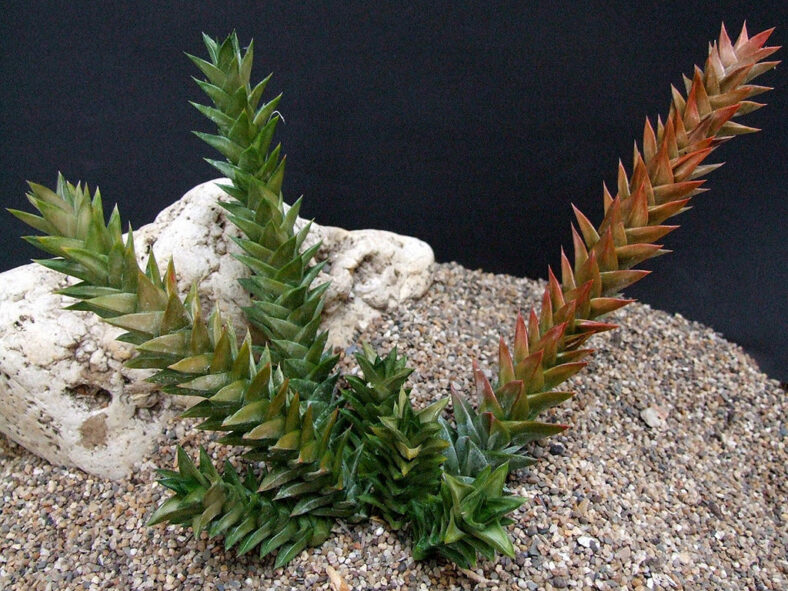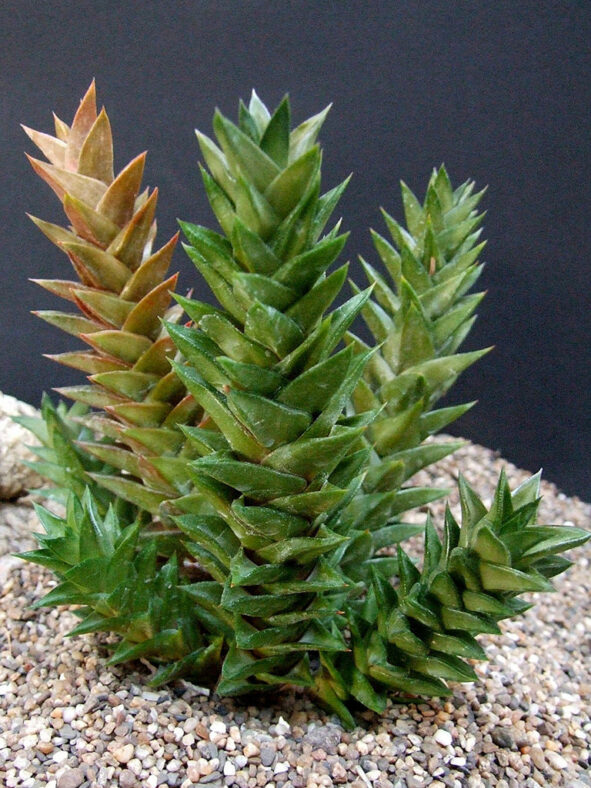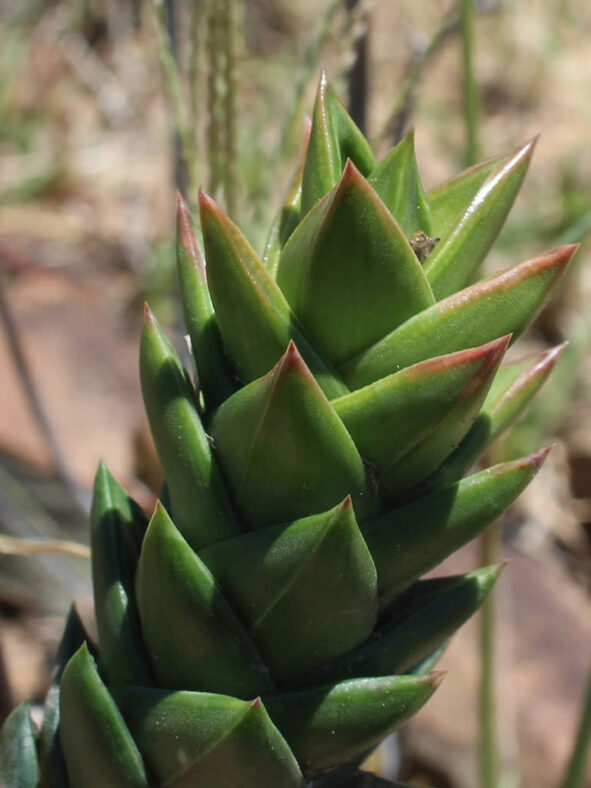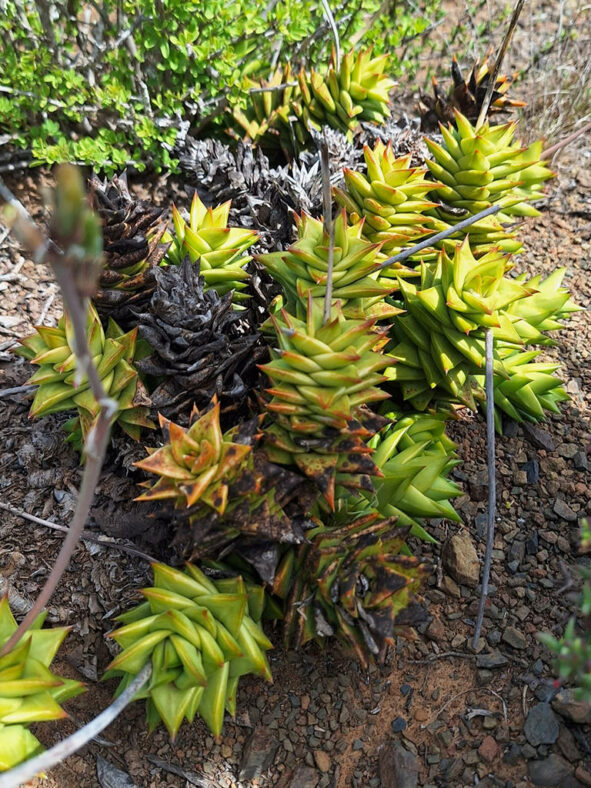Astroloba congesta can be easily confused with its close relative, Astroloba foliolosa. However, it can be distinguished by its larger, straighter, and less compact leaves. Unlike Astroloba foliolosa, which typically has leaves bent outwards or positioned horizontally, the leaves of Astroloba congesta are often straight or curved inward.
Scientific Name
Astroloba congesta (Salm-Dyck) Uitewaal
Common Name(s)
Eastern Astroloba
Synonym(s)
Aloe congesta, Apicra congesta, Haworthia congesta, Tulista congesta
Scientific Classification
Family: Asphodelaceae
Subfamily: Asphodeloideae
Genus: Astroloba
Etymology
The specific epithet "congesta" (pronounced "kon-JES-tuh") means "collected, accumulated" and refers to the clumping habit of this species.
Origin
Astroloba congesta is native to South Africa. It grows on karroid flats from Cradock to Grahamstown in the Eastern Cape province.
Description
Astroloba congesta is a small succulent that forms compact clumps of slender stems densely covered with glossy, dark green leaves. The stems may be erect or sprawling, growing up to 10 inches (25 cm) long and proliferating from around the base. The leaves are stiff and smooth in texture, often straight or incurved, sharply pointed, with margins and keel with cartilaginous edges. They are often arranged in five straight rows.
During spring and summer, Astroloba congesta produces cream-colored flowers in lax, erect inflorescences that are usually multi-branched.

How to Grow and Care for Astroloba congesta
Light: Astroloba congesta thrives when provided with some protection from direct sunlight. If it has spent the winter indoors, gradually move the plant outdoors into the bright sunlight to prevent sunburn.
Soil: This plant prefers well-draining soil and does not like its roots to remain wet for prolonged periods. You can use commercial soil for succulents or make your own potting mix.
Temperature: Astroloba congesta tolerates warmer temperatures in the summer but prefers cooler temperatures in the winter. It grows best in USDA Plant Hardiness Zones 10a to 11b, with average minimum winter temperatures ranging from 30°F to 50°F (-1.1°C to 10°C).
Watering: Water the plant thoroughly during its most active growth periods in spring and fall. Wait until the top of the soil dries out before watering again. Reduce the watering frequency when the plant's growth slows significantly in winter. When the plant is mostly dormant in the summer, water it just enough to keep the leaves from shriveling.
Fertilizing: Although Astroloba congesta does not require much fertilizer, feeding it can encourage optimal growth. Use a water-soluble fertilizer only during the growing season.
Repotting: This plant can remain in the same pot for several years. To keep it healthy and happy, repot it into fresh soil every two to three years, ideally in spring or fall.
Propagation: Astroloba congesta can be easily propagated by offsets and cuttings, but can also be started from seeds. Remove the offsets and take cuttings during the growing season. Sow the seeds in spring or fall.
See more at How to Grow and Care for Astroloba.
Toxicity of Astroloba congesta
Astroloba congesta is considered non-toxic and safe around kids and pets.
Links
- Back to genus Astroloba
- Succupedia: Browse succulents by Scientific Name, Common Name, Genus, Family, USDA Hardiness Zone, Origin, or cacti by Genus
Photo Gallery
Click on a photo to see a larger version.


